Product Consultation
Your email address will not be published. Required fields are marked *
Hydraulic cylinders are essential mechanical actuators used to provide unidirectional force through a unidirectional stroke. They operate based on fluid pressure and are a core component in a wide range of machinery and industrial systems. From lifting and lowering to precise linear movement, hydraulic cylinders make it possible to execute heavy-duty tasks with reliability and control.
In aerial work platforms (AWPs), hydraulic cylinders serve as the driving force behind vertical and horizontal lifting mechanisms. Their ability to deliver stable, high-capacity movement is vital for worker safety and operational efficiency in elevated tasks. At the same time, precision hydraulic cylinders—engineered with fine tolerances and enhanced control mechanisms—play a critical role in industries requiring high accuracy and repeatability, such as aerospace, robotics, and medical devices.
This article explores the role of hydraulic cylinders in two key domains: aerial work platforms and precision-driven applications. It offers insights into the types, design considerations, and maintenance best practices, while also highlighting leading manufacturers and emerging technological trends shaping the future of hydraulic cylinder engineering.
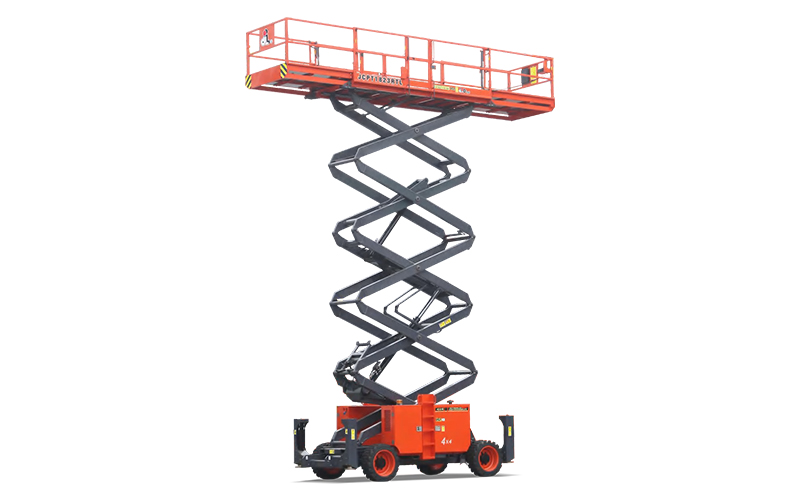
Content
Hydraulic cylinders are mechanical actuators that convert hydraulic energy into linear motion and force. They are widely used in various industrial and mobile equipment to perform lifting, pushing, pulling, and lowering tasks. The operation relies on pressurized hydraulic fluid—typically oil—that acts upon a piston within a cylindrical housing, creating movement along a straight path.
The core principle behind a hydraulic cylinder is Pascal’s Law, which states that pressure applied to a confined fluid is transmitted equally in all directions. In a hydraulic cylinder, this pressure acts on the surface area of the piston, generating a force that moves the piston rod. The direction and speed of this movement are controlled by valves and pumps in the hydraulic system.
Hydraulic cylinders are constructed from several essential components:
Barrel: The main body that contains the pressurized fluid and guides the piston.
Piston: Moves within the barrel and separates the internal chambers.
Rod (Piston Rod): Attached to the piston and extends out of the cylinder to transmit force.
Seals: Prevent leakage of hydraulic fluid and protect the internal components from contaminants.
Ports: Entry and exit points for hydraulic fluid, allowing pressure to act on either side of the piston.
These components work together to create a system capable of precise, repeatable motion under a wide range of pressures and conditions.
Depending on the specific application and performance requirements, hydraulic cylinders come in various types:
These cylinders use hydraulic fluid to extend the piston in one direction, while a spring or external force retracts it. They are commonly used in applications where force is needed in only one direction.
Fluid is used to apply force in both extending and retracting strokes. These are more versatile and are widely used in machinery that requires bidirectional force.
Designed with multiple nested stages (tubes), telescopic cylinders provide a long stroke from a compact initial length. They are ideal for applications with limited installation space, such as dump trucks and lifts.
These cylinders have external rods that hold the end caps in place, making them easy to service. They are typically used in industrial machinery and have standardized dimensions.
Built with welded end caps and fewer external parts, welded cylinders are compact and durable. They are commonly used in mobile equipment, including construction and agricultural machinery.
Understanding the different types of hydraulic cylinders and their internal structure lays the foundation for selecting the right model for specific applications—especially in aerial platforms and precision systems where performance, safety, and reliability are non-negotiable.
Hydraulic cylinders are fundamental to the operation of aerial work platforms (AWPs), which are used to lift workers, tools, and materials to elevated work areas. These platforms rely on hydraulic systems to ensure smooth, controlled vertical and horizontal movement. Given the nature of their application—often at significant heights—hydraulic cylinders used in AWPs must meet strict performance and safety standards.
AWPs demand hydraulic cylinders that can deliver consistent and powerful lifting force. The cylinder must be capable of handling the full weight of the platform, personnel, and any equipment in use. Load-bearing capacity must be accurately matched to the maximum rated load of the AWP to ensure reliable operation.
Hydraulic cylinders must operate smoothly and evenly to avoid sudden movements or jerks, which could destabilize the platform. The internal components, such as the piston and seals, must maintain precise alignment and pressure control to promote platform balance during extension or retraction.
AWP hydraulic systems must comply with stringent safety regulations, including overload protection, emergency descent mechanisms, and fail-safe locking valves. The hydraulic cylinders must be designed and tested to meet regional and international safety certifications, such as ANSI, EN, or ISO standards.
Hydraulic cylinders are integrated into several types of aerial work platforms, each with distinct configurations and operational modes:
These platforms use a crisscrossing framework that extends vertically through hydraulic cylinder actuation. The design depends heavily on the cylinder’s ability to generate vertical lift without horizontal movement.
Also known as cherry pickers or telescopic lifts, boom lifts utilize one or more hydraulic cylinders to extend and articulate the boom arm. This allows for reach over obstacles and positioning at various angles.
These compact platforms employ hydraulic cylinders to raise a mast directly upward. They are often used in indoor maintenance tasks where space and maneuverability are limited.
To meet the functional and safety demands of AWPs, hydraulic cylinders must incorporate several key design elements:
Compact Size: Space within an AWP is limited, making compact cylinder designs essential for integration without compromising movement.
High Strength: Materials used for the cylinder body and piston must provide high tensile and yield strength to endure repeated lifting cycles.
Corrosion Resistance: Outdoor operation and exposure to harsh environments require surface treatments or materials such as chrome plating and stainless steel to resist rust and degradation.
Proper maintenance of hydraulic cylinders is essential to prevent failures and maintain safe operation:
Regular Inspection: Check for external leaks, wear on seals, and unusual noises during operation.
Hydraulic Fluid Quality: Monitor fluid levels and cleanliness. Contaminated or degraded fluid can cause internal damage.
Seal Replacement: Periodically replace seals to prevent fluid leakage and maintain pressure integrity.
Check Mounting Points: Ensure all bolts and fasteners are secure to avoid misalignment or unintended motion.
Hydraulic cylinders in AWPs must perform reliably under high loads and variable conditions. Their role in elevating personnel safely requires attention to design, maintenance, and compliance with safety standards, all of which are essential for effective operation in elevated work environments.
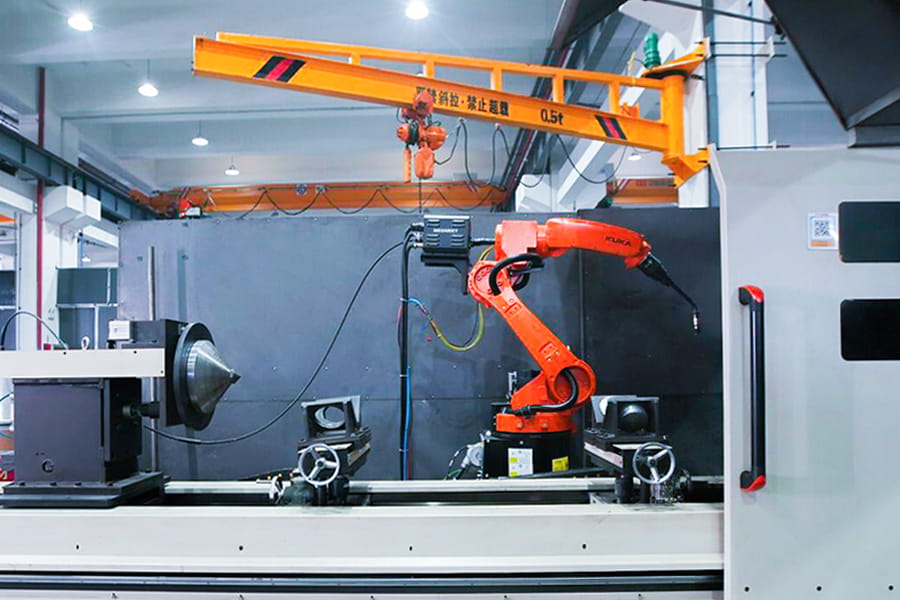
While hydraulic cylinders are generally known for their strength and lifting power, certain applications demand much more than raw force—they require high accuracy, controlled movement, and repeatability. Precision hydraulic cylinders are engineered to meet these demands, providing exact motion control in industries where even minor deviations can lead to significant issues. These cylinders are designed to deliver smooth, finely-tuned performance while maintaining structural integrity and long-term reliability.
In the context of hydraulic systems, precision refers to the cylinder’s ability to control movement with high accuracy and minimal deviation. This includes precise positioning of the piston rod, consistent force output, and controlled speed throughout the stroke. Precision hydraulic cylinders are often integrated with sensors and control systems to achieve this level of performance.
Several industries depend on precision hydraulic cylinders due to their need for exact motion control and dependable operation under tight tolerances:
Hydraulic cylinders in aerospace manufacturing and testing are used for applications such as flight simulators, control surface testing, and structural fatigue tests. These systems demand high repeatability and tight control under varying loads and speeds.
In medical equipment like surgical tables, patient lifts, and imaging systems, hydraulic cylinders must operate quietly and smoothly with exact positioning. The ability to make fine adjustments is crucial to patient safety and procedural accuracy.
Robotic systems, particularly those used in automation and assembly, often utilize precision hydraulic actuators for their ability to perform complex tasks with consistent force and motion accuracy. They are used in tasks that require synchronized and repeatable movements.
Precision cylinders play a role in presses, CNC machinery, and other manufacturing equipment that must apply force in a highly controlled manner. They help achieve uniform results in high-volume production lines and are critical to maintaining product quality.
Precision hydraulic cylinders differ from standard models through a range of specialized features designed to maximize control:
Tight Tolerances: Manufactured to stringent dimensional standards, ensuring minimal variation in movement and consistent force application.
Smooth Operation: Equipped with advanced sealing systems and surface finishes to reduce friction and vibration, improving control.
Accurate Positioning: Capable of fine positional adjustments with minimal backlash or drift over time, even under dynamic loads.
To meet the demands of precision applications, these hydraulic cylinders often incorporate high-end technologies that go beyond basic fluid mechanics:
Position Sensors: Built-in linear transducers or magnetostrictive sensors allow for real-time feedback on piston position, enhancing accuracy and enabling closed-loop control.
Servo Valves: High-performance valves modulate fluid flow with great precision, enabling responsive adjustments to movement speed and pressure.
Feedback Control Systems: Integration with electronic control units (ECUs) allows for automated adjustment and monitoring. These systems can dynamically correct deviations and optimize performance for each task.
Precision hydraulic cylinders serve a critical role in modern industries that require more than just movement—they require control, reliability, and the ability to execute complex tasks with minimal error. By combining mechanical strength with smart technologies, these cylinders continue to push the boundaries of what hydraulic systems can achieve.
Choosing the appropriate hydraulic cylinder for a specific application is critical to ensuring operational efficiency, safety, and long-term performance. With various types, sizes, and configurations available, selecting the right cylinder requires careful evaluation of the application's requirements and environmental conditions.
Several technical and practical factors should be assessed before selecting a hydraulic cylinder:
Understanding the maximum load the cylinder will need to handle is essential. This includes static and dynamic loads, shock absorption needs, and load direction (push, pull, or both). Selecting a cylinder with sufficient capacity prevents premature wear and potential system failure.
Each hydraulic cylinder is designed to operate within a specific pressure range. It is important to match the cylinder’s rated pressure with the system’s hydraulic pressure to avoid overloading the seals, barrel, and other internal components.
Stroke length refers to the distance the piston travels from its retracted to its fully extended position. It must align with the mechanical movement required by the application. Cylinders with excessive stroke can lead to stability issues, while insufficient stroke will limit function.
The mounting method affects alignment, stability, and overall performance. Common mounting styles include flange, trunnion, clevis, and foot mounts. Proper mounting helps reduce side loads and misalignment, which can extend the service life of the cylinder.
Consider exposure to dust, moisture, corrosive substances, and temperature extremes. Cylinders operating in harsh conditions may require additional features such as corrosion-resistant materials, protective boots, or specialized seals.
While catalogs and technical sheets provide useful specifications, real-world applications often involve complex requirements that go beyond standard options. Working with a hydraulic cylinder specialist or manufacturer can help in:
Customizing cylinder designs to fit unique space or performance constraints.
Identifying the right materials and finishes for specific environmental demands.
Evaluating system integration to ensure compatibility with existing hydraulic circuits and components.
Optimizing performance and safety through expert knowledge of load dynamics and fluid mechanics.
A specialist’s insight can lead to better-performing systems, fewer breakdowns, and reduced total cost of ownership over time.
In summary, selecting the right hydraulic cylinder involves more than just choosing a size or type. It requires a comprehensive understanding of the application’s technical requirements and operating environment. A well-matched hydraulic cylinder improves productivity, enhances system longevity, and contributes to overall operational success.
Proper maintenance of hydraulic cylinders is essential to ensure their continued performance, safety, and efficiency. Whether used in aerial work platforms or high-precision machinery, hydraulic cylinders are subject to wear, contamination, and mechanical stress over time. Proactive maintenance and timely repairs help extend the service life of these components and reduce unexpected downtime.
Preventative maintenance focuses on regularly scheduled tasks that keep hydraulic cylinders in good condition and prevent failures before they occur.
Frequent visual and functional inspections are the first step in maintaining hydraulic cylinders. Look for signs of oil leaks, rod scoring, corrosion, misalignment, or abnormal noises during operation. Catching early warning signs can prevent larger failures later on.
The rod and other moving parts should be properly lubricated to reduce friction and minimize wear. Inadequate lubrication may result in overheating, seal damage, or piston failure.
Maintaining clean and high-quality hydraulic fluid is critical. Check fluid levels regularly, and replace the hydraulic oil according to manufacturer recommendations. Contaminated fluid—due to dirt, water, or metal particles—can cause internal abrasion, seal degradation, and system inefficiency.
Understanding common issues can help in diagnosing and resolving problems quickly.
Leaks often result from worn or damaged seals, rod scoring, or improper fittings. Replacing seals and ensuring that the rod surface is smooth and undamaged can address most leakage problems.
Cylinder drift occurs when the piston rod moves without any input pressure, often due to internal leakage across the piston seal or a faulty valve. Testing internal components and replacing damaged seals usually resolves this issue.
External debris or internal breakdown products can enter the hydraulic system and damage the cylinder. Regular filtration and fluid replacement help mitigate contamination risks.
Corrosion on the rod or inside the barrel compromises sealing and weakens structural integrity. Using corrosion-resistant materials and keeping exposed components clean and dry helps prevent this issue.
Not all damaged hydraulic cylinders need to be replaced; many issues can be repaired cost-effectively. However, knowing when replacement is the better option is key.
Repair is suitable when:
The damage is limited to seals, fittings, or minor surface wear.
Replacement parts are readily available.
The cylinder body and rod are structurally sound.
Consider full replacement when:
The cylinder has suffered extensive corrosion or deep scoring.
The rod is bent or the barrel is cracked.
The cost of repair approaches or exceeds the price of a new cylinder.
The application has changed and requires different specifications.
In high-demand or safety-critical applications—like aerial lifts or precision robotics—prioritizing the reliability of hydraulic cylinders is essential. A strong maintenance program and informed repair decisions help maintain productivity, reduce operating costs, and safeguard equipment and personnel.
Choosing a reliable manufacturer or supplier is just as important as selecting the right hydraulic cylinder. Reputable companies offer not only high-quality products but also technical support, customization options, and timely delivery. Below is a list of some of the leading hydraulic cylinder manufacturers and suppliers recognized for their engineering expertise, product durability, and global presence.
A global leader in motion and control technologies, Parker Hannifin offers a wide range of hydraulic cylinders, including industrial, mobile, and precision-engineered solutions. Their global service network and customization capabilities make them a preferred choice across multiple sectors.
Bosch Rexroth is known for high-performance hydraulic components, including compact and heavy-duty cylinders for industrial automation and mobile equipment. The brand is especially respected for its innovation in integrated sensor technology and energy-efficient solutions.
Eaton manufactures reliable and efficient hydraulic cylinders for applications in agriculture, construction, aerospace, and marine. Their focus on sustainability and energy-efficient system integration adds long-term value for customers.
Specializing in high-pressure hydraulic solutions, Enerpac offers precision and heavy-lifting cylinders for construction, mining, and industrial maintenance. Their products are widely used in challenging environments that require dependable performance.
Liebherr is not only a global player in construction equipment but also a manufacturer of robust hydraulic cylinders used in cranes, earthmovers, and aerospace systems. Their engineering expertise supports demanding applications that require long service life and extreme load handling.
While widely known for construction machinery, Caterpillar also produces heavy-duty hydraulic cylinders as part of its integrated machine systems. These cylinders are engineered to match specific equipment models for optimized performance and durability.
HYDAC offers a complete range of standard and custom hydraulic cylinders for mobile and industrial applications. Their products are often found in renewable energy, marine, and process engineering sectors, with a focus on compact design and high power density.
As one of the largest independent hydraulic cylinder manufacturers, Wipro supplies to leading OEMs across the globe. Their offerings cover construction, mining, and material handling equipment with an emphasis on global manufacturing and distribution.
Primarily recognized for pneumatic components, SMC also produces a range of compact hydraulic cylinders used in automation and robotics. Their precision-engineered products are especially valued in electronics and medical device manufacturing.
Bucher provides tailored hydraulic solutions, including cylinders for specialized applications in elevators, vehicles, and machinery. Their strength lies in modular systems and integration with electronic control systems for smart hydraulic performance.
These manufacturers vary in specialization, from high-force lifting cylinders to miniature precision actuators. Selecting a supplier should be based on the application’s technical demands, the required scale of production, and the availability of post-sales support. Many of these companies also offer value-added services such as custom engineering, on-site troubleshooting, and system integration to meet specific operational goals.
As industries continue to evolve toward automation, sustainability, and digital integration, hydraulic cylinder technology is also undergoing significant transformation. New materials, intelligent control systems, and energy-saving designs are reshaping how hydraulic cylinders are developed and applied. These innovations aim to improve performance, reliability, and adaptability in both traditional and advanced applications.
One of the most notable trends is the integration of sensors into hydraulic cylinders to create “smart” systems. These sensors, such as magnetostrictive or linear position sensors, enable real-time monitoring of the piston’s position, velocity, and stroke length. Key benefits include:
Enhanced Precision: Live data improves control in motion-critical applications, especially in robotics, aerospace, and medical equipment.
Predictive Maintenance: Sensor data can help identify early signs of wear or malfunction, allowing for proactive maintenance and reducing unexpected downtime.
Improved System Efficiency: Feedback loops enable real-time adjustments, improving the responsiveness and accuracy of the entire hydraulic system.
These smart cylinders are often used in conjunction with programmable logic controllers (PLCs), human-machine interfaces (HMIs), and industrial IoT platforms for integrated system management.
Electric actuators and electro-hydraulic cylinders are becoming increasingly popular alternatives to traditional hydraulic systems, particularly where clean operation and precise control are needed. These systems combine the force capability of hydraulics with the controllability of electric drives.
Cleaner Operation: With fewer fluids involved, these systems reduce the risk of leaks and environmental contamination.
Tighter Motion Control: Electric control provides highly accurate position, speed, and force regulation.
Energy Efficiency: By eliminating constant power draw from hydraulic pumps, these systems consume less energy and reduce heat generation.
Although electric options may not yet match the brute strength of large hydraulic systems in some heavy-duty applications, they are gaining ground in sectors that prioritize control and cleanliness, such as packaging, electronics, and medical devices.
Efficiency is a top priority across all sectors, and hydraulic systems are being optimized to reduce energy consumption and environmental impact. Key developments include:
Variable Displacement Pumps: These allow for flow rate and pressure to be adjusted based on demand, minimizing energy waste during idle operation.
Load-Sensing Systems: These detect the exact pressure and flow needed for a task and adjust accordingly, preventing over-pressurization and saving energy.
Lightweight Cylinder Materials: New alloys and composite materials reduce the weight of cylinders without compromising strength, improving efficiency in mobile and aerospace applications.
Some manufacturers are also exploring bio-based hydraulic fluids that are biodegradable and less harmful in case of leakage, aligning with global sustainability goals.
These emerging trends reflect a broader shift toward smarter, cleaner, and more efficient hydraulic systems. Whether applied to aerial work platforms, robotics, or automated manufacturing, the next generation of hydraulic cylinders is expected to deliver higher performance while reducing operational costs and environmental impact. Staying informed about these innovations can help businesses future-proof their operations and remain competitive in an increasingly digital industrial landscape.
Hydraulic cylinders remain indispensable across a wide range of industries, from lifting personnel on aerial work platforms to executing micron-level movements in high-precision equipment. Their versatility and capacity to deliver reliable linear motion under varying loads and conditions make them a foundational component in modern machinery.
In aerial work platforms, hydraulic cylinders are essential for safe, stable elevation and positioning. They must meet strict safety standards, provide high lifting capacity, and function reliably in outdoor environments. Compact yet robust designs, along with corrosion-resistant materials and precise control features, are key factors that determine their suitability for such demanding applications.
In precision fields such as aerospace, medical technology, and robotics, hydraulic cylinders must go beyond raw force. They require intelligent feedback, smooth operation, and exceptional accuracy. Technologies such as servo valves, position sensors, and feedback control systems are helping to meet these exacting demands, enabling greater consistency and control in sensitive operations.
Selecting the right hydraulic cylinder involves more than just choosing a model from a catalog. Engineers must evaluate multiple factors—load, stroke, mounting, environment, and control needs—to find a product that fits the application. Maintenance and timely repair are also critical, as well-maintained cylinders contribute to better system performance and lower operational costs over time.
Leading global manufacturers like Parker Hannifin, Bosch Rexroth, and Eaton are shaping the market through innovation, quality, and customer support. At the same time, the industry is moving forward with smart technologies, electric alternatives, and eco-friendly designs that support efficiency and sustainability.
Looking ahead, hydraulic cylinder technology will continue to evolve. With the growing emphasis on automation, digital integration, and energy efficiency, we can expect smarter, cleaner, and more adaptive solutions. Staying updated on these developments allows businesses to invest in systems that are not only effective today but also aligned with the demands of tomorrow.
By understanding the full scope of hydraulic cylinders—from basic principles to cutting-edge trends—businesses and engineers can make informed decisions that improve safety, performance, and cost-efficiency in both aerial and precision-based applications.
Your email address will not be published. Required fields are marked *
Marvelous Design Meets Rigorous Manufacturing
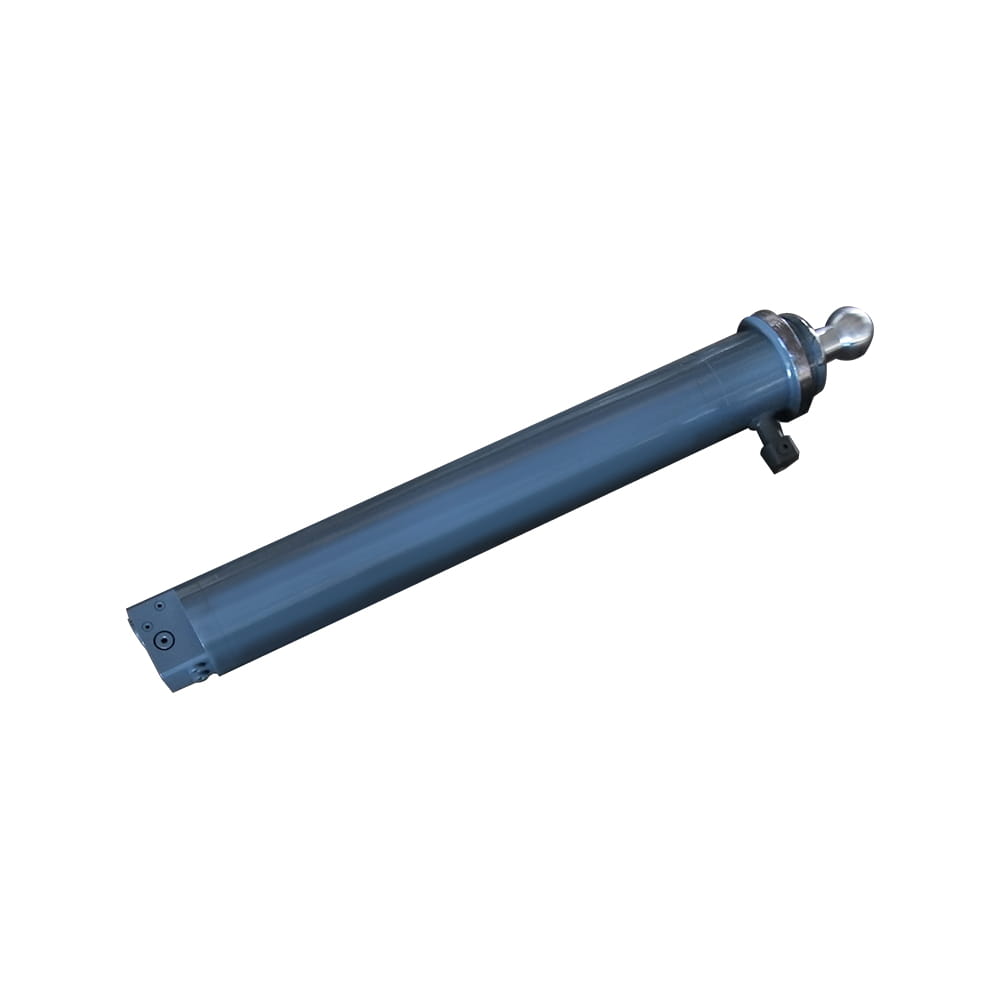 Scissor Lift Aerial Platform Hydraulic Outrigger Cylinder
Scissor Lift Aerial Platform Hydraulic Outrigger Cylinder
Function: Firmly Supports the Vehicle: Ensures stability during operation. The ball-head foot automatically levels on slopes, while the integrated balance valve...
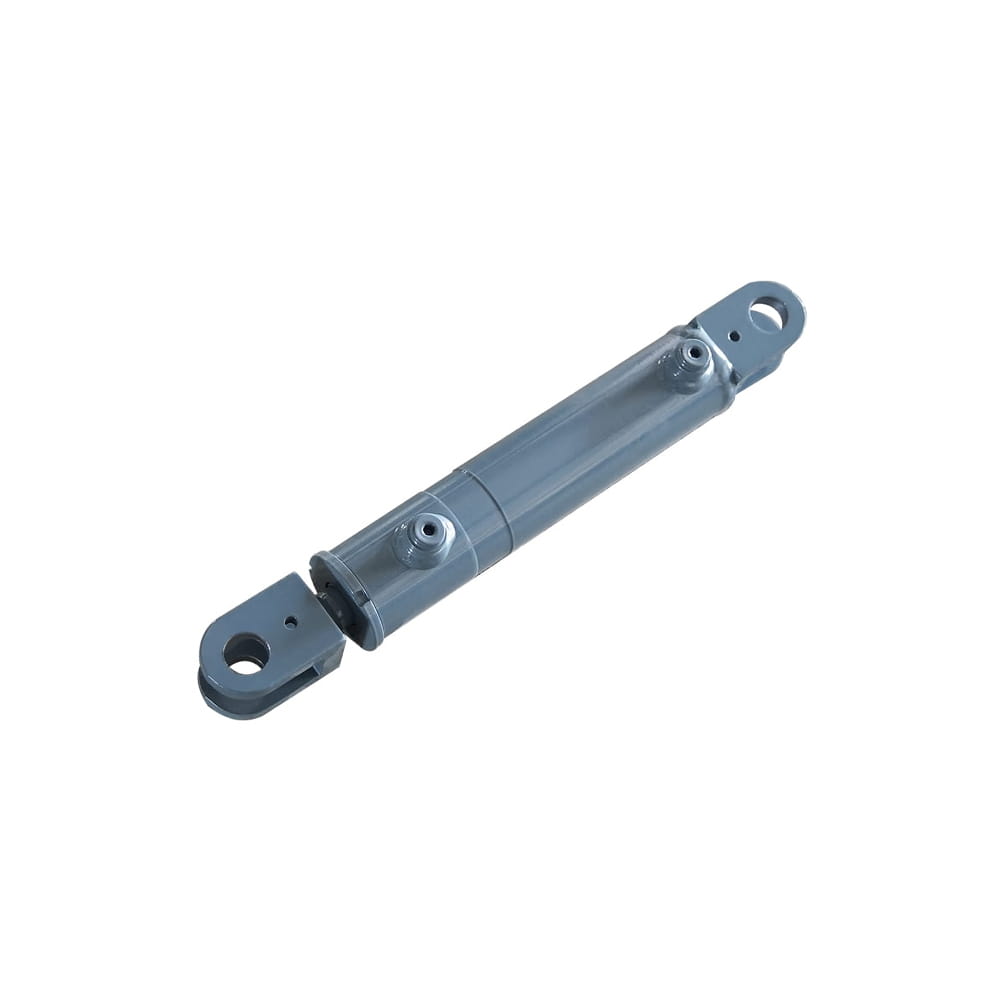 Scissor Lift Aerial Platform Hydraulic Steering Cylinder
Scissor Lift Aerial Platform Hydraulic Steering Cylinder
Function: Connecting Chassis and Wheel Hub: Through hydraulic pressure, drives the piston rod to move, enabling precise wheel hub rotation. This ensures platfor...
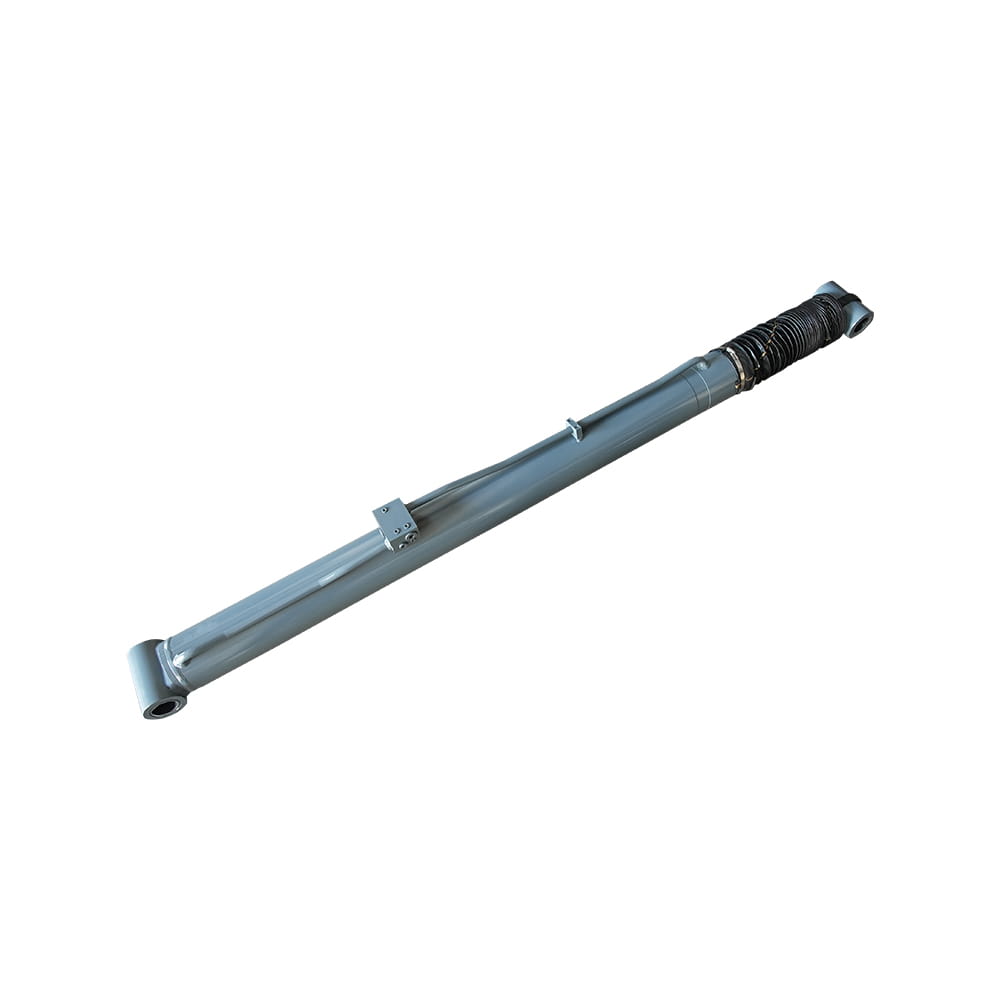 Boom Lift Aerial Platform Hydraulic Luffing Cylinder
Boom Lift Aerial Platform Hydraulic Luffing Cylinder
Function: Adjust the angle of the telescopic arm to flexibly position the work platform at various heights and positions, meeting diverse aerial work requiremen...
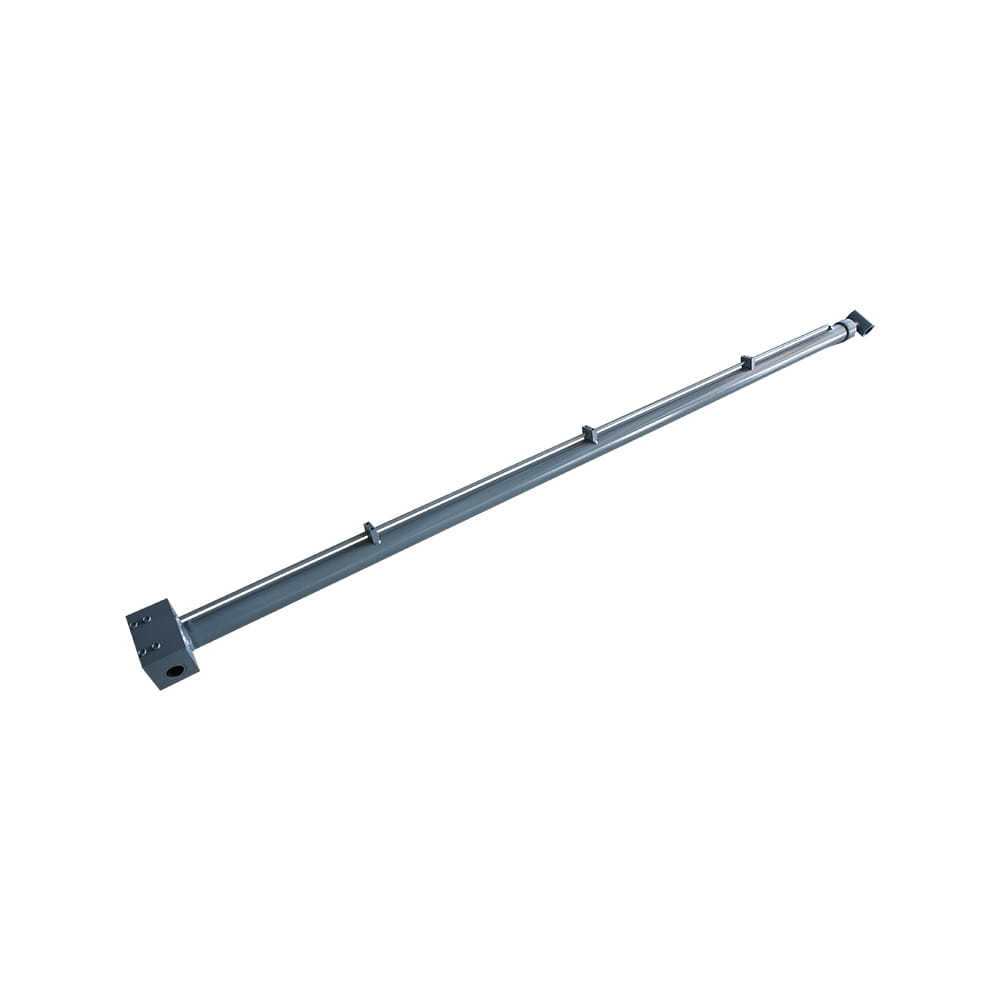 Boom Lift Aerial Platform Hydraulic Telescopic Cylinder
Boom Lift Aerial Platform Hydraulic Telescopic Cylinder
Function: Adjust the length of the arm to allow the aerial work platform to lift and move flexibly, ensuring range and height requirements.
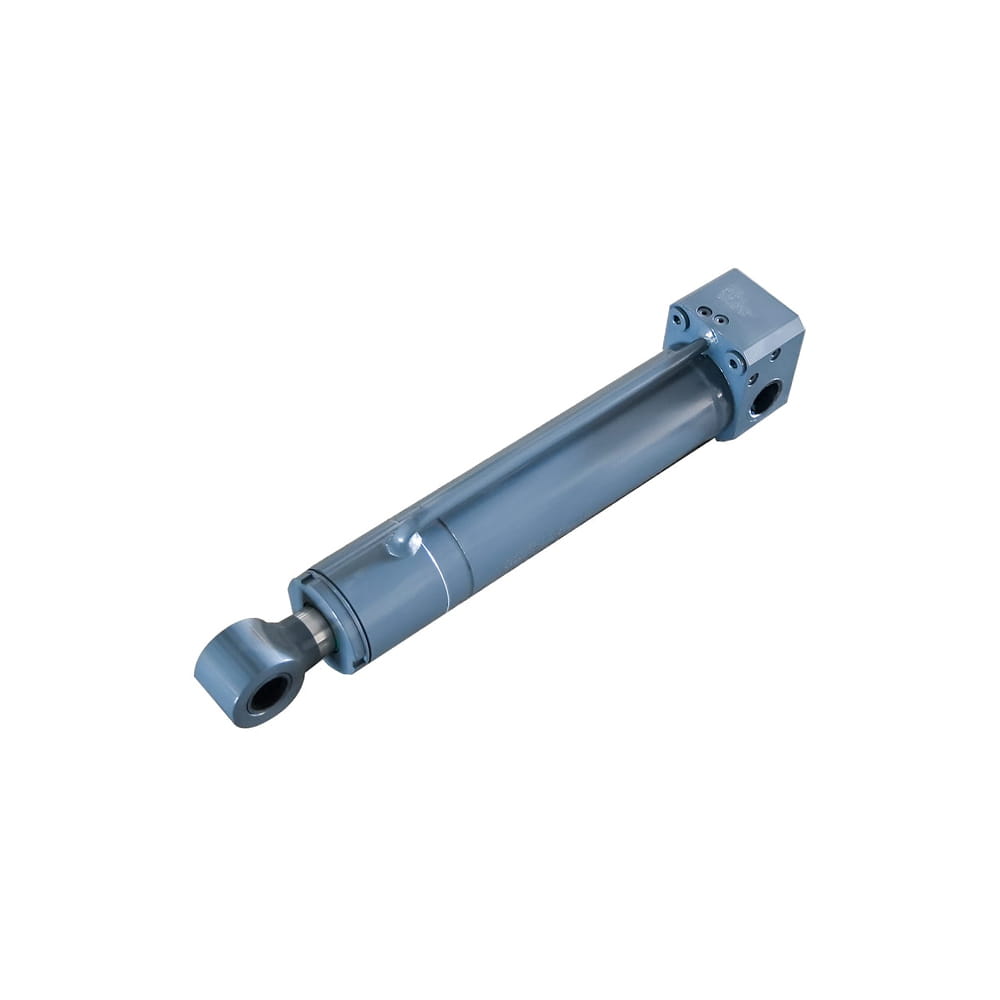 Boom Lift Aerial Platform Hydraulic Frame Leveling Cylinder
Boom Lift Aerial Platform Hydraulic Frame Leveling Cylinder
Function: Automatically adjust the chassis at the bottom of the platform to a level state, ensuring stable and wobble-free support in different terrains and wor...
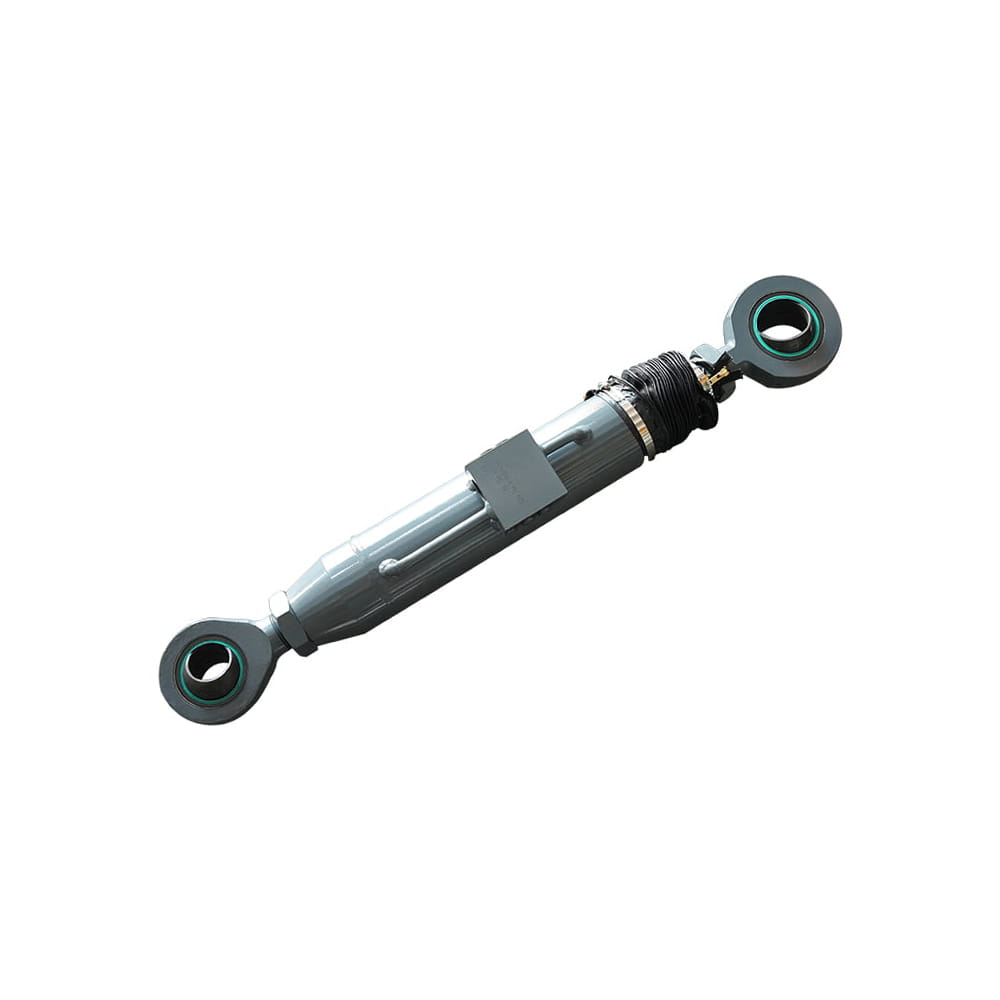 Boom Lift Aerial Platform Hydraulic Bridge Extension Cylinder
Boom Lift Aerial Platform Hydraulic Bridge Extension Cylinder
Function: An important design that enhances adaptability and working range. This function allows the platform to widen its chassis under specific conditions to ...
Copyright © by Zhejiang Huanfeng Machinery Co., Ltd. Rights Reserved.
